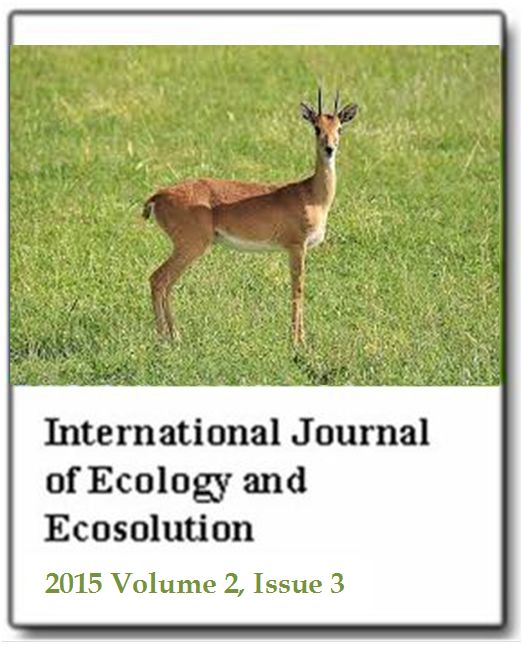Diurnal activity patterns of oribi (Ourebia ourebi) in Maze National Park, Ethiopia
Wondimagegnehu Tekalign and Afework BekeleInternational Journal of Ecology and Ecosolution
Published: July 3 2015
Volume 2, Issue 3
Pages 31-35
Abstract
Diurnal activity patterns of oribi (Ourebia ourebi) reveals how animals cope with changing environmental conditions in securing food and escaping enemies. It was studied during the wet and dry seasons for three years in Ethiopia. Data collection was carried out by using focal sampling technique of the free-ranging animals between 06:00 and 18:00 hours of the day using alternate periods during morning (06:00 to 10:00 hrs), mid-day (10:00 to 14:00 hrs) and late afternoon (14:00 to 18:00 hrs). Based on the result of the present study, feeding constituted the highest (57.58%) activity pattern compared to other diurnal activities. There was a morning and evening peak activities of feeding and mid-day peak of lying during wet and dry seasons, for both males and females. The result of the study confirms that there must be environmental factors that override physiological and morphological factors in determining how oribi activity budgets relate with its body mass. Diurnal activity patterns of oribi were mainly influenced by forage quality and availability in the study area. The oribi small body size and digestive physiology are potentially affecting their activity patterns. So, the habitat of the area should be properly managed in sustainable way by designing various conservation strategies to alleviate the activity problems.
Keywords: Activity patterns, feeding, focal watch, Maze National Park, oribi, Ourebia ourebi, time budget.
Full Text PDF
